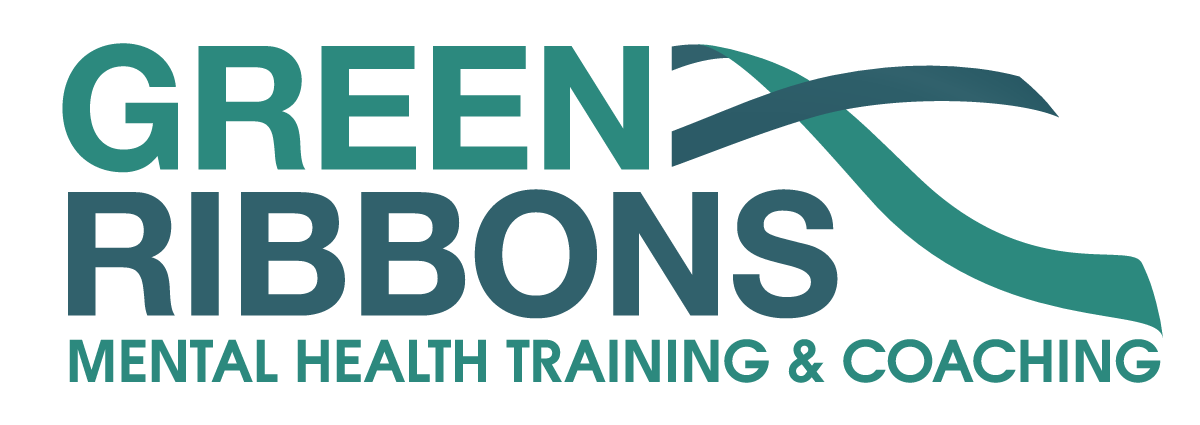The History of the Green Ribbon
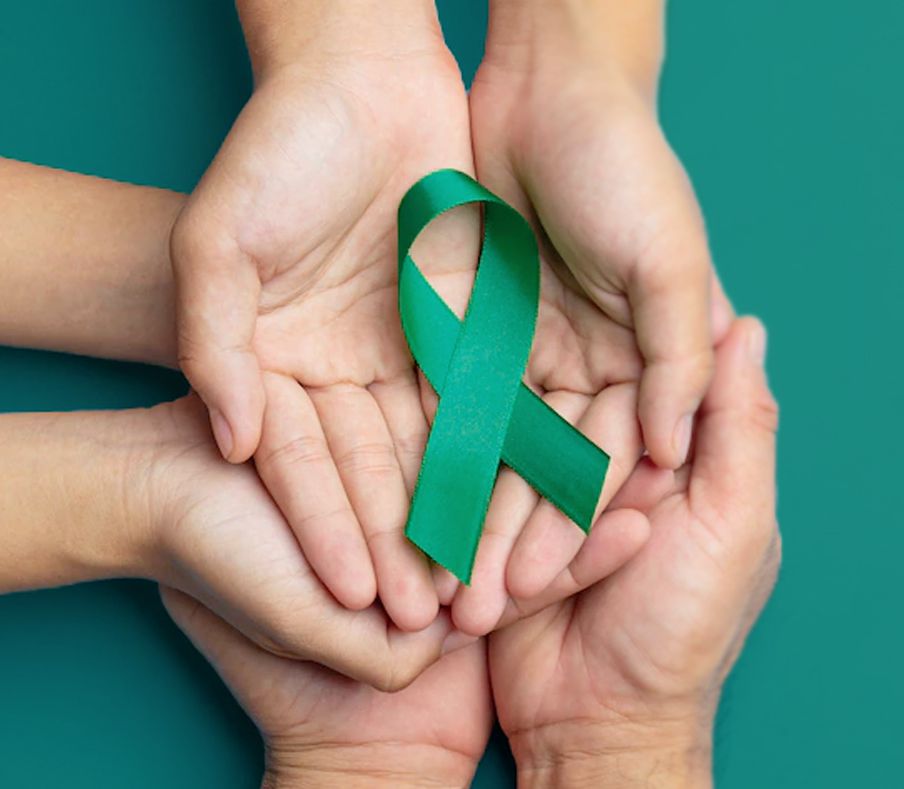
Mental health is an essential aspect of human well-being, yet it has often been overlooked or stigmatised in various cultures and societies. However, over time, the awareness and understanding of mental health issues have gradually improved, thanks in part to powerful symbols like the green ribbon. The green ribbon has become a globally recognised emblem of mental health awareness, serving as a beacon of hope, support, and understanding for those affected by mental health issues.
This page will unravel the threads of the green ribbon’s journey as a symbol for mental health awareness, exploring its origins, the reasons behind its choice of colour, and its growth from a local symbol to a global phenomenon. We will also look at the high-profile advocacy surrounding the green ribbon, its connection to Mental Health Awareness Week, and its impact on mental health initiatives in the United Kingdom.
What’s on this page?
- The Green Ribbon: It’s emergence and growth
- Why Green?
- High-Profile Advocacy
- Mental Health Awareness Week and the Green Ribbon in the UK
The Green Ribbon: It’s emergence and growth
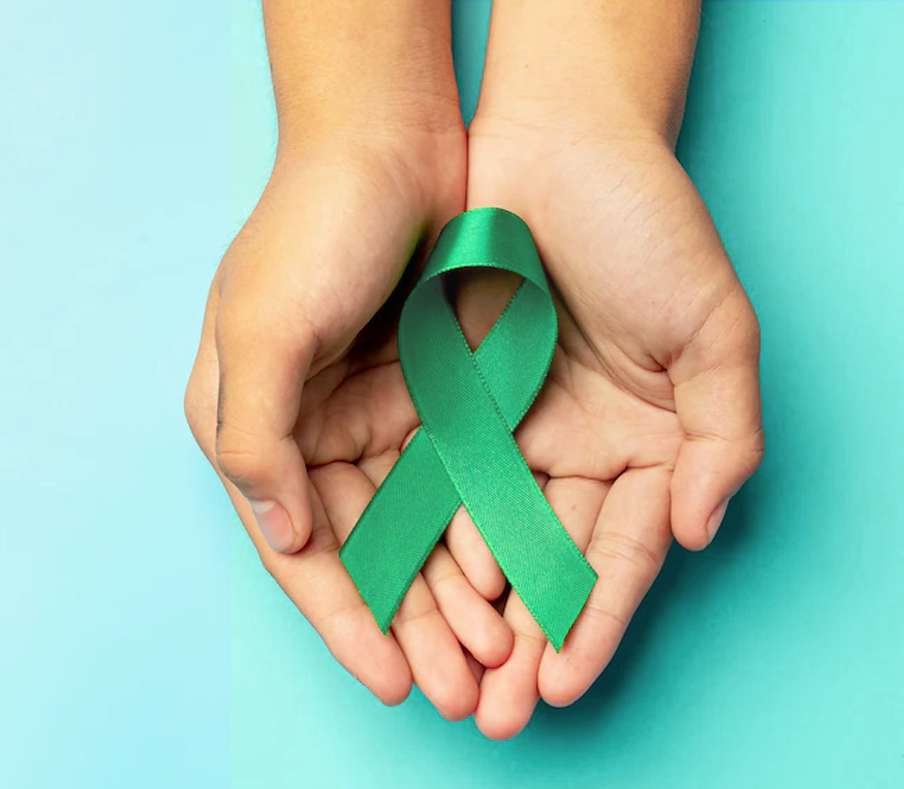
Origins in the United States
National Mental Health Association
The National Mental Health Association (NMHA), now known as Mental Health America (MHA), played a pivotal role in the adoption of the green ribbon as a symbol for mental health awareness. Founded in 1909, the organisation has a long-standing history of advocating for mental health support and resources in the United States.
In the early 1990s, the NMHA sought to develop a campaign that would bring mental health issues to the forefront of public consciousness. Inspired by the success of the red ribbon as a symbol of HIV/AIDS awareness, the organisation decided to adopt a ribbon of its own to raise visibility and create a sense of unity among mental health advocates.
The Green Ribbon Campaign
The green ribbon campaign launched in the 1990s focused on encouraging open conversations about mental health and breaking down the barriers that prevented people from seeking help and support. The campaign utilised the green ribbon as a visual symbol, which individuals could wear to show their commitment to mental health awareness and their solidarity with those affected by mental health issues.
The campaign also aimed to educate the public about mental health conditions, dispel myths and misconceptions, and advocate for policy changes to improve mental health care and support. Through various initiatives, events, and collaborations, the green ribbon campaign helped to foster a more open and supportive environment for mental health discussions in the United States.
Expansion Beyond the National Mental Health Association
As the green ribbon campaign gained traction, other mental health organisations and advocacy groups across the United States began to adopt the symbol as well. Over time, the green ribbon transcended its initial association with the NMHA and became a widely recognised symbol of mental health awareness, support, and solidarity.
Today, the green ribbon is used by various mental health organisations, campaigns, and events across the United States, such as the National Alliance on Mental Illness (NAMI) and the Be Vocal: Speak Up for Mental Health initiative. Its continued use and visibility serve as a testament to the power of the green ribbon as a symbol of hope, understanding, and empathy for mental health awareness.
Emergence and Growth of Green Ribbons in the United Kingdom
The Mental Health Foundation
The Mental Health Foundation, a UK-based charity dedicated to promoting mental health awareness and well-being, has played a significant role in popularising the green ribbon as a symbol of mental health awareness in the United Kingdom. The organisation, founded in 1949, is one of the UK’s leading voices on mental health issues and is responsible for organising Mental Health Awareness Week, an annual event that brings mental health issues to the forefront of public consciousness.
Since 2001, the Mental Health Foundation has used the green ribbon as its symbol for Mental Health Awareness Week, encouraging individuals, organisations, and communities to wear the ribbon as a sign of solidarity and support for mental health awareness. The green ribbon has become an integral part of the event, helping to raise visibility, promote conversations about mental health, and foster a more open and understanding environment for those affected by mental health issues.
Time to Change
Another influential organisation in the UK that has adopted the green ribbon as a symbol for mental health awareness is Time to Change. Launched in 2007, Time to Change is a social movement aimed at breaking the stigma surrounding mental health issues in the UK. By encouraging open conversations about mental health and challenging negative stereotypes, Time to Change has played a crucial role in shifting public attitudes and perceptions.
Time to Change has utilised the green ribbon in various campaigns, events, and initiatives, using the symbol as a powerful visual representation of their commitment to mental health awareness and support. By embracing the green ribbon, the organisation has helped to further establish its significance as a symbol of hope, unity, and understanding in the United Kingdom.
High-Profile Advocacy and Public Support
The visibility of the green ribbon in the UK has also been boosted by the support of celebrities, public figures, and even members of the royal family. High-profile advocacy has played an essential role in promoting mental health awareness and reducing stigma, with many public figures wearing the green ribbon as a sign of solidarity and commitment to the cause.
One notable example is the Heads Together campaign, led by the Duke and Duchess of Cambridge and Prince Harry, which aims to tackle the stigma surrounding mental health and promote mental well-being. During various events and appearances, the royals have been seen wearing the green ribbon, further raising its profile and contributing to its growing significance as a symbol of mental health awareness in the UK.
Grassroots Initiatives and Local Campaigns
The green ribbon’s growth in the UK has also been fuelled by numerous grassroots initiatives and local campaigns that have embraced the symbol as a means of promoting mental health awareness within their communities. Schools, universities, workplaces, and community groups across the country have organised events and activities centred around the green ribbon, helping to spread its message of hope, understanding, and support to an even wider audience.
Why Green?
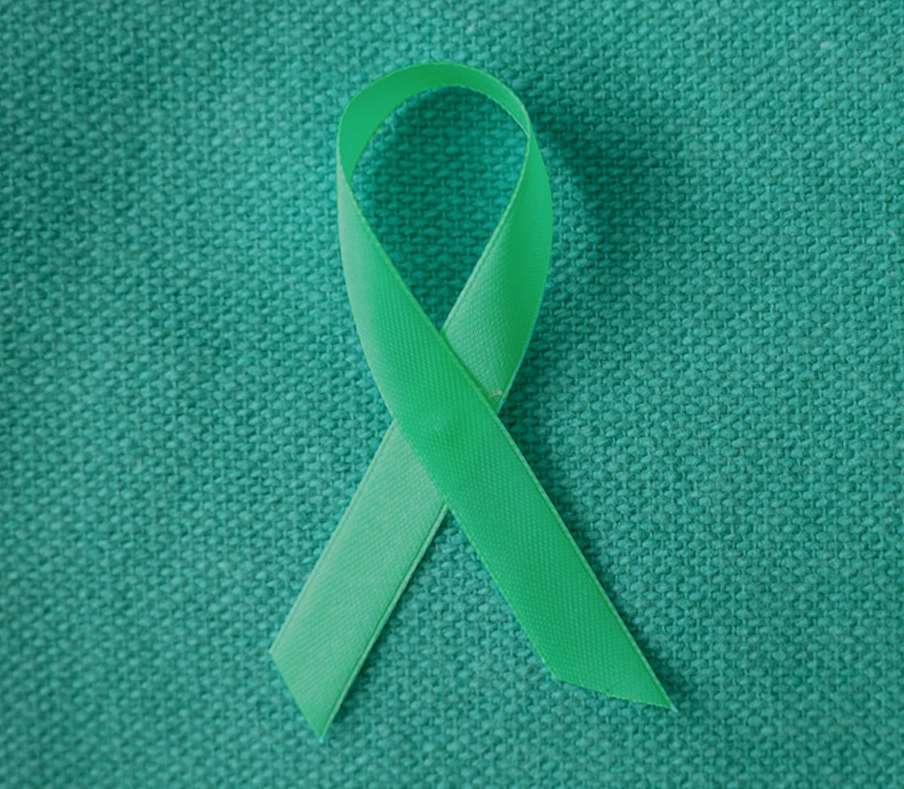
Why is it a “Green” Ribbon?
Symbolism of Green
Green is a colour that is widely associated with nature, growth, renewal, and hope. These associations make it an ideal choice for representing mental health awareness, as the journey towards mental well-being often involves growth, healing, and the fostering of hope. The colour green also embodies a sense of balance, harmony, and stability, which are essential components of mental health.
By adopting the colour green, the mental health awareness movement aimed to create a positive, hopeful, and reassuring symbol that would resonate with those affected by mental health issues and encourage understanding and empathy among the broader public.
Distinctiveness and Visibility
Another factor that contributed to the selection of green as the colour for the mental health awareness ribbon was the desire to create a distinctive and easily recognisable symbol. At the time when the green ribbon was adopted, other coloured ribbons were already being used to represent various causes, such as the red ribbon for HIV/AIDS awareness and the pink ribbon for breast cancer awareness.
Choosing green as the colour for the mental health awareness ribbon allowed the symbol to stand out from other cause-related ribbons and ensure that it was easily identifiable and memorable. The colour green is also highly visible, making it an effective choice for raising awareness and promoting conversations about mental health.
A Unifying Colour
Green is a colour that transcends cultural and geographical boundaries, making it an ideal choice for a symbol that seeks to unite people across the world in their support for mental health awareness. By adopting the colour green, the mental health awareness movement created a unifying symbol that could be embraced by diverse populations, helping to break down barriers and foster a sense of global solidarity around the cause.
The choice of the colour green for the mental health awareness ribbon carries significant symbolic meaning, as it represents hope, growth, balance, and harmony, all of which are central to the concept of mental well-being. Green also offers distinctiveness, visibility, and a unifying quality that allows the ribbon to resonate with people across cultures and geographies. Together, these factors make green the perfect colour for a symbol that aims to promote mental health awareness, understanding, and support worldwide.
High-Profile Advocacy
High-profile advocacy has played a crucial role in raising the visibility of the green ribbon and promoting mental health awareness, understanding, and support on a global scale. Here are some notable examples of high-profile advocacy for mental health awareness and the green ribbon.

High Profile Endorsements
The Royal Family: Heads Together Campaign
As mentioned earlier, the British royal family has been actively involved in promoting mental health awareness through the Heads Together campaign. The Duke and Duchess of Cambridge and Prince Harry launched the campaign in 2016 to tackle the stigma surrounding mental health and promote mental well-being. They have been seen wearing the green ribbon at various events and appearances, lending their influence to the cause and raising the profile of the green ribbon as a symbol of mental health awareness in the UK and beyond.
Celebrities and Public Figures
Many celebrities and public figures have embraced the green ribbon and have used their platforms to promote mental health awareness, share their personal experiences, and encourage open conversations about mental health. Some notable examples include:
- Demi Lovato: The singer and actress has been open about her struggles with mental health and has actively supported the green ribbon and mental health awareness initiatives. She has worn the green ribbon during performances and events, drawing attention to the cause and inspiring others to speak up and seek help.
- Lady Gaga: As an outspoken advocate for mental health, Lady Gaga co-founded the Born This Way Foundation, which focuses on empowering young people and promoting mental health awareness. She has been seen wearing the green ribbon, lending her voice to the cause and promoting understanding and support for those affected by mental health issues.
- Dwayne “The Rock” Johnson: The actor and former professional wrestler has been open about his experiences with depression and has actively supported mental health awareness. He has worn the green ribbon and spoken about the importance of mental health care and breaking the stigma surrounding mental health issues.
- Selena Gomez: The singer and actress has been candid about her battles with anxiety and depression. In 2018, Selena Gomez designed a limited-edition lime green ribbon charm for Coach, a popular fashion brand, with proceeds benefiting the Mental Health America organisation.
- Glenn Close: The award-winning actress co-founded Bring Change to Mind, a non-profit organisation focused on ending the stigma and discrimination surrounding mental illness. Glenn Close has been seen wearing the green ribbon on numerous occasions and continues to be a powerful advocate for mental health awareness.
High-profile advocacy, including support from celebrities, public figures, and influential organisations, has played a significant role in raising the visibility of the green ribbon as a symbol of mental health awareness. The involvement of these high-profile advocates has helped to break down the stigma surrounding mental health issues, promote open conversations, and encourage understanding and support on a global scale.
Mental Health Awareness Week and the Green Ribbon in the UK
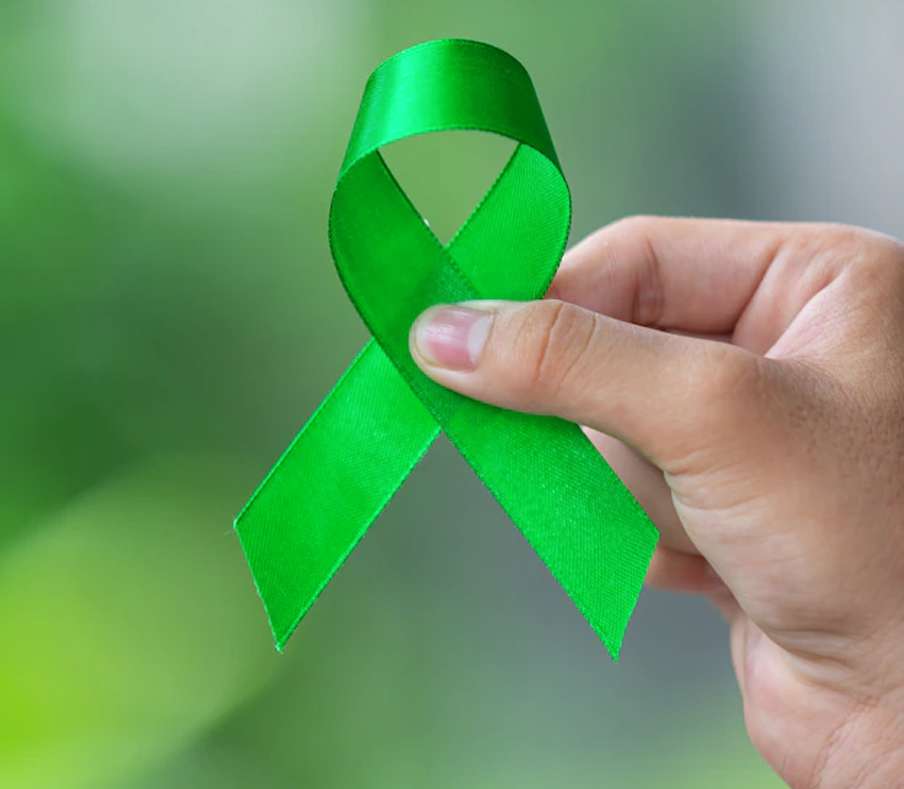
The Green Ribbons Role in the UK
Mental Health Awareness Week
Mental Health Awareness Week was first launched in 2001 by the Mental Health Foundation, a UK-based charity dedicated to promoting mental health and well-being. The event is held annually and focuses on a specific theme each year, such as stress, anxiety, or body image, to raise awareness and promote understanding of various mental health issues.
During Mental Health Awareness Week, numerous events, activities, and campaigns take place across the country, engaging individuals, organisations, and communities in conversations about mental health and encouraging people to share their experiences, challenge stigma, and seek help and support.
The Green Ribbon’s Role
The green ribbon has become an integral part of Mental Health Awareness Week in the UK. Throughout the week, the Mental Health Foundation encourages people to wear the green ribbon as a visible sign of their support for mental health awareness and as a symbol of solidarity with those affected by mental health issues. The green ribbon serves as a conversation starter, helping to break down barriers and promote open and honest discussions about mental health.
The green ribbon is also used during Mental Health Awareness Week to raise funds for mental health initiatives, research, and support services. By purchasing and wearing the green ribbon, individuals can contribute to the cause and help to ensure that vital mental health resources and support are available to those who need them.
Community Involvement and Impact
The green ribbon’s association with Mental Health Awareness Week has helped to foster a sense of community involvement and engagement across the UK. Schools, universities, workplaces, and community groups organise events and activities centred around the green ribbon, such as:
- Workshops and seminars on mental health topics
- Fundraising events like charity walks or bake sales
- Sharing personal stories and experiences on social media using the green ribbon as a symbol
- Displaying green ribbons in public spaces, such as offices, classrooms, and community centres, to promote mental health awareness and create a supportive environment
These grassroots initiatives have played a crucial role in raising the profile of the green ribbon and further establishing its significance as a symbol of mental health awareness in the UK.
Mental Health Awareness Week and the green ribbon are closely connected in the United Kingdom, with the green ribbon serving as a powerful symbol of hope, understanding, and support for mental health awareness. The green ribbon’s involvement in Mental Health Awareness Week has helped to engage communities, promote open conversations about mental health, and foster a more understanding and supportive environment for those affected by mental health issues across the UK.
Mental Health Awareness Week and the green ribbon are closely connected in the United Kingdom, with the green ribbon serving as a powerful symbol of hope, understanding, and support for mental health awareness. The green ribbon’s involvement in Mental Health Awareness Week has helped to engage communities, promote open conversations about mental health, and foster a more understanding and supportive environment for those affected by mental health issues across the UK.
The history of the green ribbon as a symbol for mental health awareness is a captivating tale of a small emblem that blossomed into a global phenomenon. From its humble beginnings as a local movement to its current status as a unifying symbol, the green ribbon has made an indelible mark on the fight for mental health awareness.
As we don the green ribbon, let’s remember that it’s more than just a colourful accessory. It’s a powerful symbol that sparks conversation, challenges stigma, and inspires change. So, go ahead, pin that green ribbon on your lapel or wear it as a wristband, and show the world that mental health matters. Together, we can continue to unravel the threads of stigma and build a brighter future for mental health awareness.
Green Ribbon FAQs
- Why is the green ribbon used as a symbol for mental health awareness? The green ribbon was chosen for its vibrant colour, which catches the eye and signifies hope, growth, and renewal. Its adoption was also inspired by the success of other coloured ribbons, such as the red ribbon for HIV/AIDS awareness.
- Are there different shades of green ribbons? Yes, there are different shades of green ribbons, each representing a specific aspect of mental health. For example, the lime green ribbon stands for general mental health awareness, while the jade green ribbon symbolises the fight against stigma.
- How can I show my support for mental health awareness using the green ribbon? You can wear a green ribbon pin, wristband, or any other accessory featuring the emblem. Sharing information about mental health and the green ribbon on social media can also help spread awareness and spark conversations.
- Do other mental health organisations use different symbols? While the green ribbon is widely recognised as a symbol for mental health awareness, some organisations may have their own unique emblems. However, these symbols often complement the green ribbon’s message rather than compete with it.
